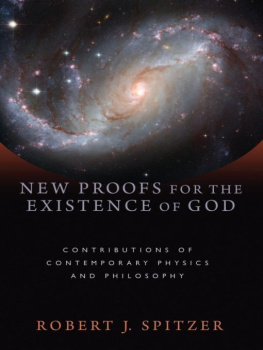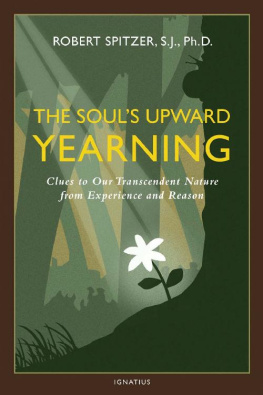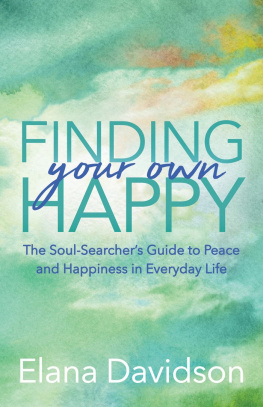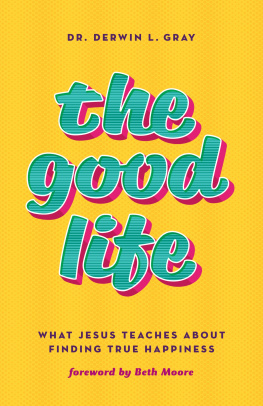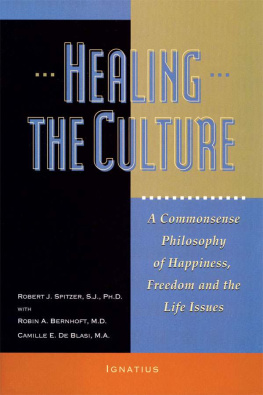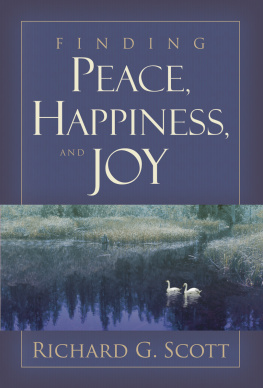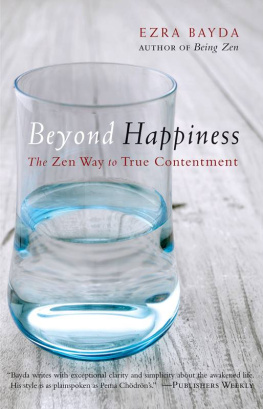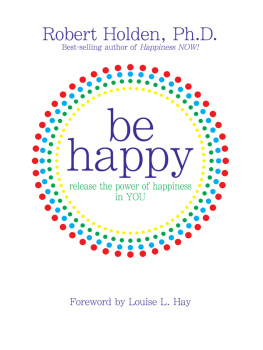FINDING TRUE HAPPINESS
Robert J. Spitzer, S.J., Ph.D.
FINDING TRUE
HAPPINESS
Satisfying Our Restless Hearts
Volume One of the Quartet:
Happiness, Suffering, and Transcendence
IGNATIUS PRESS SAN FRANCISCO
Nihil Obstat : David J. Leigh, S.J.
Censor Librorum
Imprimatur : + The Most Reverend Kevin W. Vann, J.C.D., D.D.
Bishop, Diocese of Orange
March 12, 2015
Unless otherwise noted, Scripture quotations (except those within citations) are from the Revised Standard Version of the BibleSecond Catholic Edition, 2006 by the National Council of the Churches of Christ in the United States of America. All rights reserved.
Cover design by John Herreid
2015 by Ignatius Press, San Francisco
All rights reserved
ISBN 978-1-58617-956-4 (PB)
ISBN 978-1-68149-655-9 (E)
Library of Congress Control Number 2014949938
Printed in the United States of America
In loving memory of my father and mother,
who provided a foundation for all Four Levels of Happiness in my life,
and for Pope Francis, who points continuously to the joy of the gospel
through his words and actions .
For Thou hast made us for Thyself,
and our hearts are restless until they rest in Thee.
Saint Augustine
CONTENTS
Introduction
I. A General Definition of Happiness
II. The First Kind of Desire: External-Pleasure-Material
III. The Second Kind of Desire: Ego-Comparative
IV. The Third Kind of Desire: Contributive-Empathetic
Conclusion
Introduction
I. Is science Really Against the Transcendent?
II. Evidence of the Transcendent Within Ourselves
III. Transcendence and Happiness
Introduction
I. The Four Levels of Happiness
II. The Comparison Game
III. Existential Emptiness
Introduction
I. A Three-step Process for Transforming Our Fundamental Attitudes
II. First Fundamental Attitude: What Kind of Purpose in Life Am I Looking For?
III. second Fundamental Attitude: What Am I Looking for in Others?
IV. Third Fundamental Attitude: What Am I Looking for in Myself?
V. What Kind of Freedom Am I seeking?
VI. The Benefits of Moving from Dominant Level One-Two to Dominant Level Three-Four
VII. The Level Three-Four Comparison Game
Introduction
I. Is Level Three Enough?
II. The Exterior Call of the Transcendent
Conclusion
Introduction
I. A Little Leap of Faith
II. The Self-revelation of GodJesus Christ
III. Church Community and Our Spiritual Nature
IV. The Church as Dynamic Encounter with God
Conclusion
Introduction
I. Simple Contemplation
II. Our Image of God
III. Making Common Prayers Contemplative
IV. Ignatian Contemplation
V. Silence, Joy, and Action
Introduction
I. The Inspiration of the Holy Spirit
II. Discernment of Spirits
III. The guidance of the Holy Spirit
Conclusion
Introduction
I. Step One: The Prayer of Gratitude
II. Step Two: Imitating the Heart of Jesus by Seeking a Heart of the Beatitudes
III. Praying the Examen Prayer
Introduction
I. Overcoming Cosmic emptiness, Alienation, Loneliness, and Guilt
II. A Life of Unconditional and Eternal Significance
III. The Joy of Church Community
IV. Help of the Holy spirit
V. The Joy of Contemplation
VI. The Redemption of suffering
VII. Noble Cause in the Cosmic struggle between Good and Evil
VIII. The Assurance of Eternal Life with God
ACKNOWLEDGMENTS
I am most grateful to Joan Jacoby, whose invaluable work transformed my thoughts into a full manuscript, for typing multiple copies of each chapter, making helpful editing suggestions, and helping with research.
I am also grateful to Karlo Broussard, Camille Pauley, and Justina Miller for their help in preparing the manuscript.
I would also like to express my appreciation to the Board and friends of the Magis Institute, who gave me the time and resources to complete this quartet.
INTRODUCTION
This introduction is concerned not so much with this volume on Finding True Happiness as with all four volumes in the quartet Happiness, Suffering, and Transcendence . Though this volume can be understood and used by itself, its contents are brought more fully to light through the explanation of transcendence, revelation, suffering, and evil in the later three volumes.
The following section briefly explains the intended audiences of each of the volumes, and the interrelationship among them. A second section provides a discussion of the contents of each volume and the purpose of the quartet.
I. The Intended Audience for Each Volume of the Quartet
I have written this quartet not only for committed Catholics and Christians, but also for young adults who are beginning their faith journey, and especially for those who feel themselves to be at an impassenot knowing whether to take their faith seriously or to let it slip away. Many in that latter group may have experienced being attacked for their beliefsperhaps accused of wishful thinking or naivet. some may have been confronted with misleading arguments about a contradiction between science and faith, between suffering and the loving God, or between Jesus in the Gospels and Jesus in history. Others may simply be confused by the mixed signals given in schools and the media. To help these individuals (particularly those slipping into skepticism or malaise), I have provided detailed resources in Chapter 2 of this volume, and all chapters of Volumes II and III of this quartet.
This quartet is not reserved only for those confronting skepticism and malaise, but also for those who are seeking to deepen their faith and to help others in their faith journey. The material on happiness in this volume has been tested in no less than eight hundred audiences, many comprised of people with strong faith. The response has been overwhelmingly good, because the view we have of happiness holds the key to just about every major decision and direction in our lives. To paraphrase Aristotles central tenet in his perennial work Nicomachean Ethics , happiness is the one thing you can choose for itself; everything else is chosen for the sake of happiness.
The contents of Volume II ( The Souls Upward Yearning: Clues to Our Transcendent Nature from Experience and Reason ) should also prove helpful to both audiencesskeptics and convinced believersbecause it explains eleven kinds of evidence (from five distinct methods) for our soul and the Supreme Deity who relates to it. We show in Volume I that we are made for transcendent happiness, and we will not be satisfied or fulfilled with anything less. Furthermore, when we ignore or reject this transcendent happiness (by ignoring our transcendent nature), we feel empty, and lonely, and experience a profound absence of our ultimate destiny and dignity that can cause not only a personal darkness, but also feelings of depression, and self-alienation.
This situates us within a grand irony, because contemporary culture strongly suggests that reality is exhausted by the physical domain. If the cultures materialism is correct, then we are doomed to be perpetually unfulfilled, in a state of unsatisfied yearning, which is a perfect recipe for despair. Volume II shows that this skeptical and discouraging position is completely unwarranted by exposing the huge errors of omission in contemporary materialism, which has systematically ignored the increase in evidence for our transcendence throughout the last three decades. skeptics, agnostics, and believers alike are being duped by an influential minority who are shouting to them, Dont look at that soul behind the curtain. If we are to reverse this cultural scotomaand its resultant malaisewe will have to shine a light on the whole truth, which Volume II endeavors to do.
Next page

